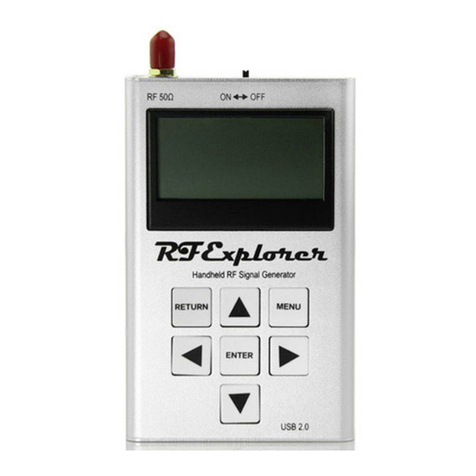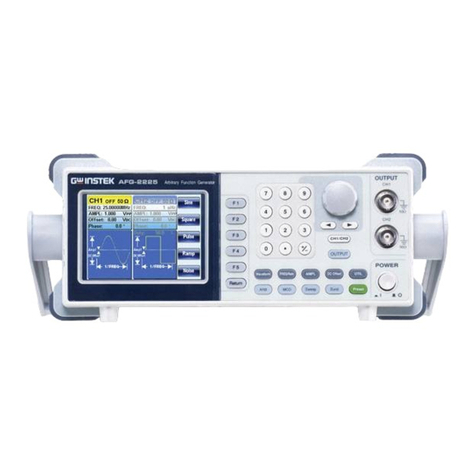28
des conditions défavorables, détruire l’appareil. Laissez donc l’appareil débranché
prendre la température ambiante avant de le mettre en marche.
• Le transformateur de tension s’échauffe pendant l’utilisation. Faites attention à ce
qu’il y ait une aération suffisante. Ne couvrez pas les fentes d’aération !
• Ne laissez jamais le transformateur de tension et les consommateurs raccordés
fonctionner sans surveillance.
• Assurez-vous que vous n’utilisez que des fusibles de rechange du type et de l’in-
tensité nominale indiqués. Il est interdit d’utiliser des fusibles rafistolés.
• Évitez l’utilisation de câbles métalliques dénudés.
• S’il est probable qu'une utilisation sans danger n'est plus possible, l'appareil doit
être mis hors service et protégé contre toute utilisation involontaire. Une utilisation
sans danger n'est plus possible si
- l'appareil présente des dommages visibles,
- l'appareil ne fonctionne plus et
- après un long stockage dans des conditions défavorables ou
- après des conditions de transport défavorables.
• Respectez aussi les consignes de sécurité dans chaque chapitre ou dans les
modes d’emploi des appareils branchés.
Description du fonctionnement
Les transformateurs de tension servent à transformer une tension continue (12 V DC
ou 24 V DC) en une tension alternative sinusoïde de 230V avec une fréquence de 50
Hz, qui permet l’utilisation de la plupart des appareils.
Grâce à la technologie de l’alimentation en courant discontinue, un gain énorme en
poids et en taille est obtenu tout en garantissant un bon rendement.
Les transformateurs de 160 W et de 220 W sont portables et équipés d’une fiche
pour l’allume-cigares. Les transformateurs de 500 W, 1000 W et de 1700 W sont pré-
vus pour un montage fixe. Le branchement s’effectue à l’aide de bornes à visser
dorées.
L’aération est assurée par un ventilateur intégré (sauf version de 160 W où l’aération
s’effectue par le boîtier).
Tous les transformateurs de tension sont protégés dans la zone d’entrée DC.
Un déclenchement de surtension ou à minimum de tension DC protège le transfor-
mateur et empêche une décharge totale de la source de tension. De plus, les trans-
formateurs possèdent une protection de surcharge et de court-circuit qui interrompt
la sortie de 230-V en cas de défaut et le signalise par un signal optique.
Afin de pouvoir contrôler le fonctionnement, l’interrupteur d’alimentation est éclairé
et l’état des sorties de la tension alternative est signalisé par une diode électrolumi-
nescente bicolore (LED duo).
9
Inbetriebnahme
Allgemein
Vergewissern Sie sich beim Anschluss der Wandler mit Zigarettenanzünderstecker,
ob die Zigarettenanzündersteckdose für die Nennleistungsaufnahme des Wandlers
ausgelegt ist (siehe Techn. Daten).
Achten Sie auf eine ausreichende Spannungsversorgung (Batteriekapazität) um eine
zufriedenstellende Betriebszeit zu gewährleisten.
Achten Sie unbedingt auf eine ausreichende Be- und Entlüftung bzw. dass die Lüf-
tungsöffnungen nicht abgedeckt werden.
Wählen Sie einen Standort für den Spannungswandler mit einer Umgebungstempe-
ratur von ca. 0 bis 40°C
DC-Anschluss der Spannungswandler
Wandlertyp: 160 W und 220 W
• Vergewissern Sie sich, dass kein Verbraucher am Spannungswandler angeschlos-
sen und der Betriebsschalter (1) in Position "0" ist.
• Stecken Sie den Stecker (7) in eine geeignete Zigarettenanzünder-Steckdose.
• Schalten Sie den Spannungswandler über den Betriebsschalter (1) ein; Die
Betriebsanzeige (3) muss grün, sowie der Betriebsschalter rot leuchten.
• Der Wechselspannungsausgang ist nun aktiv.
• Um den Spannungswandler auszuschalten, betätigen Sie den Betriebsschalter
(Position 0). Die Schalterbeleuchtung und die Betriebsanzeige (3) erlöschen.
Wandlertyp: 500 W, 1000 W und 1700 W
• Vergewissern Sie sich, dass kein Verbraucher am Spannungswandler angeschlos-
sen und der Betriebsschalter (1) in Position "0" ist.
• Entfernen Sie die beiden vergoldeten Schraubmuttern der Anschlussklemmen (10
und 11),
• Verbinden Sie die beiliegenden Anschlussleitungen mit den Anschlussklemmen:
- rote Leitung mit rot markierter Klemme "+" (11)
- schwarze Leitung mit schwarz markierter Klemme "-" (10).
• Verschrauben Sie die Schraubmuttern wieder sorgfältig, um Übergangswiderstän-
de und somit Wärmebildung an den Klemmstellen zu vermeiden.
• Verbinden Sie nun die schwarze Leitung direkt mit dem Minuspol (-) und danach
die rote Leitung direkt mit dem Pluspol (+) der Versorgungsbatterie.
• Achten Sie auch hier auf sichere und feste Verschraubung der Polklemmen;
Benutzen Sie ggf. Batteriepolfett.





























